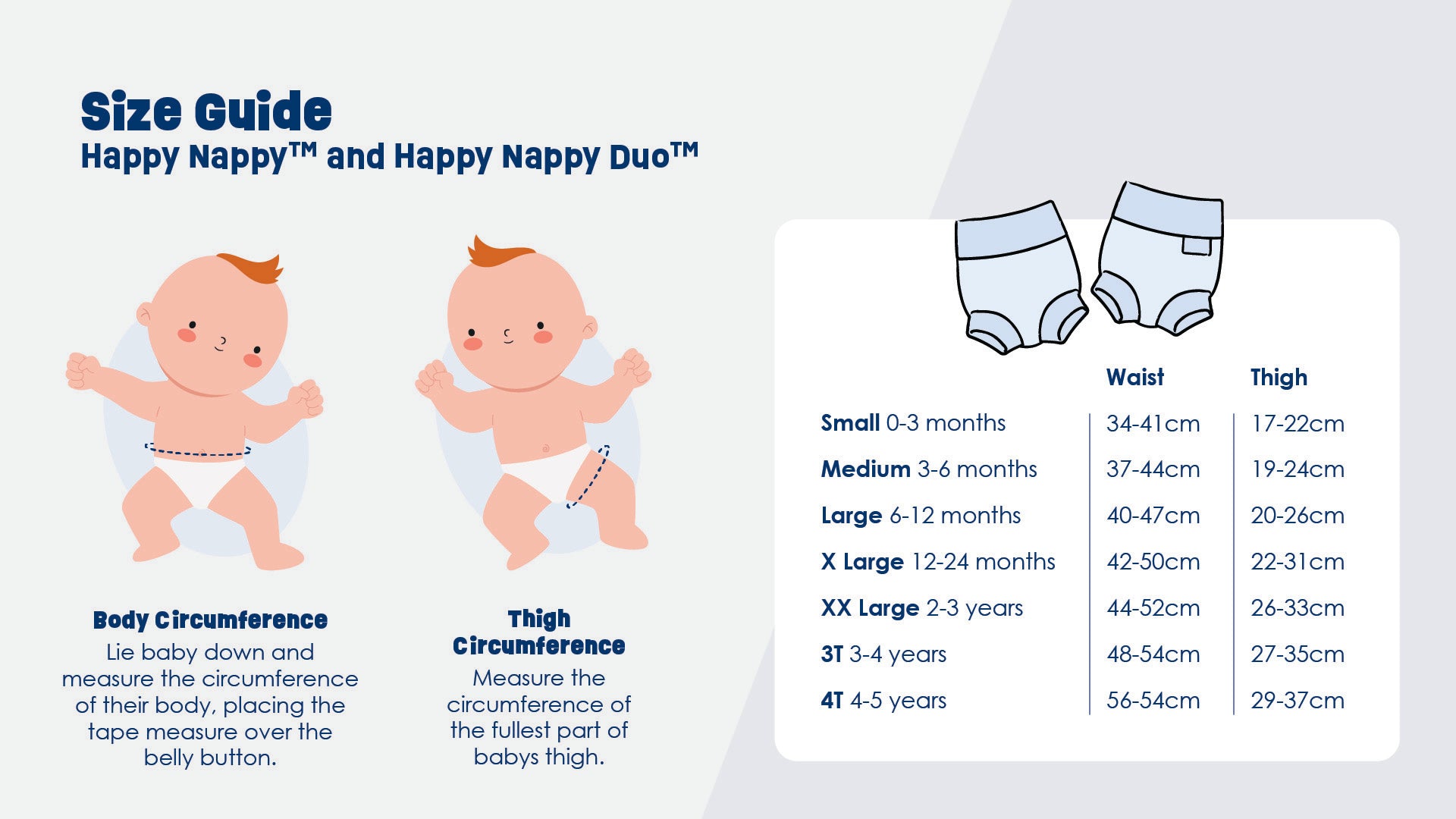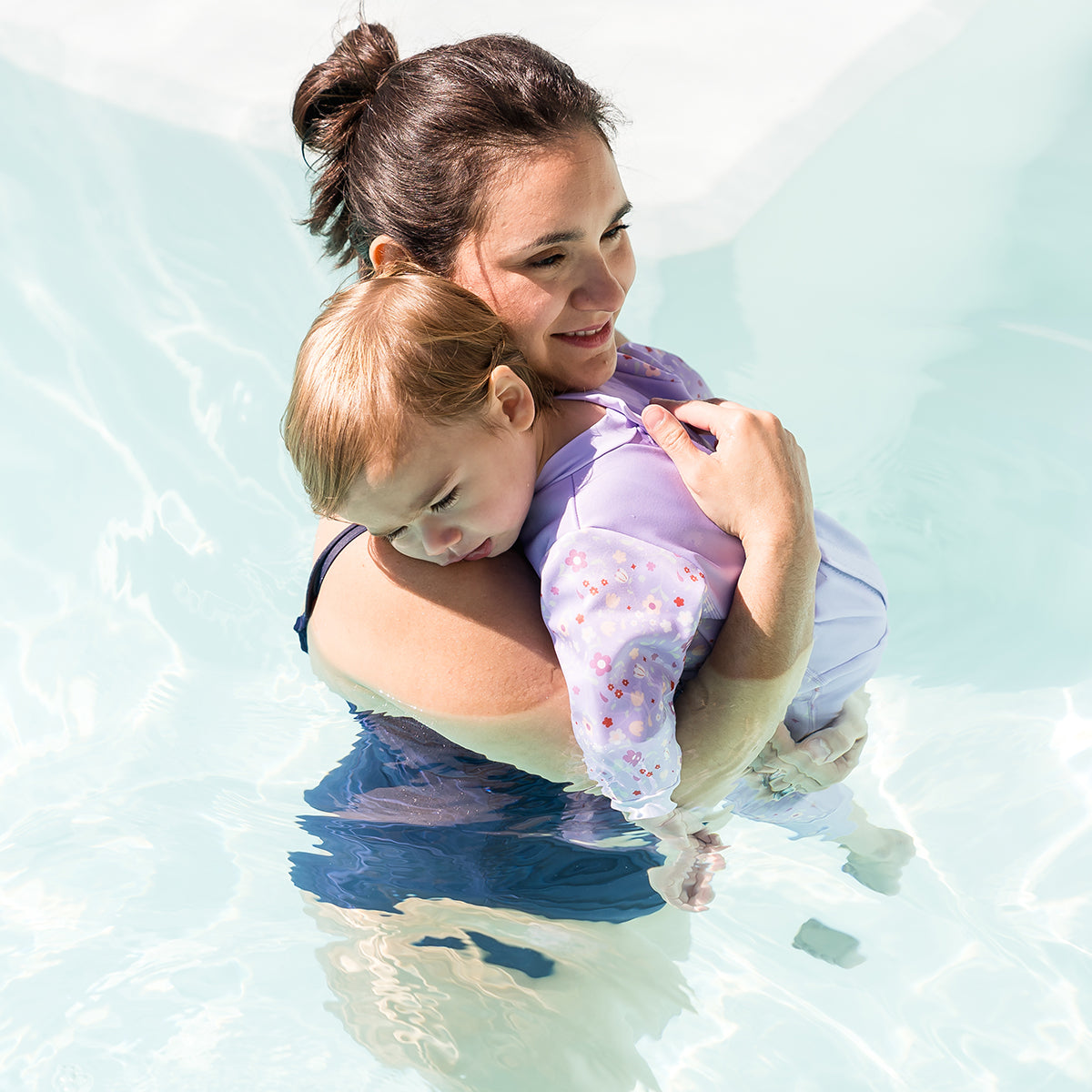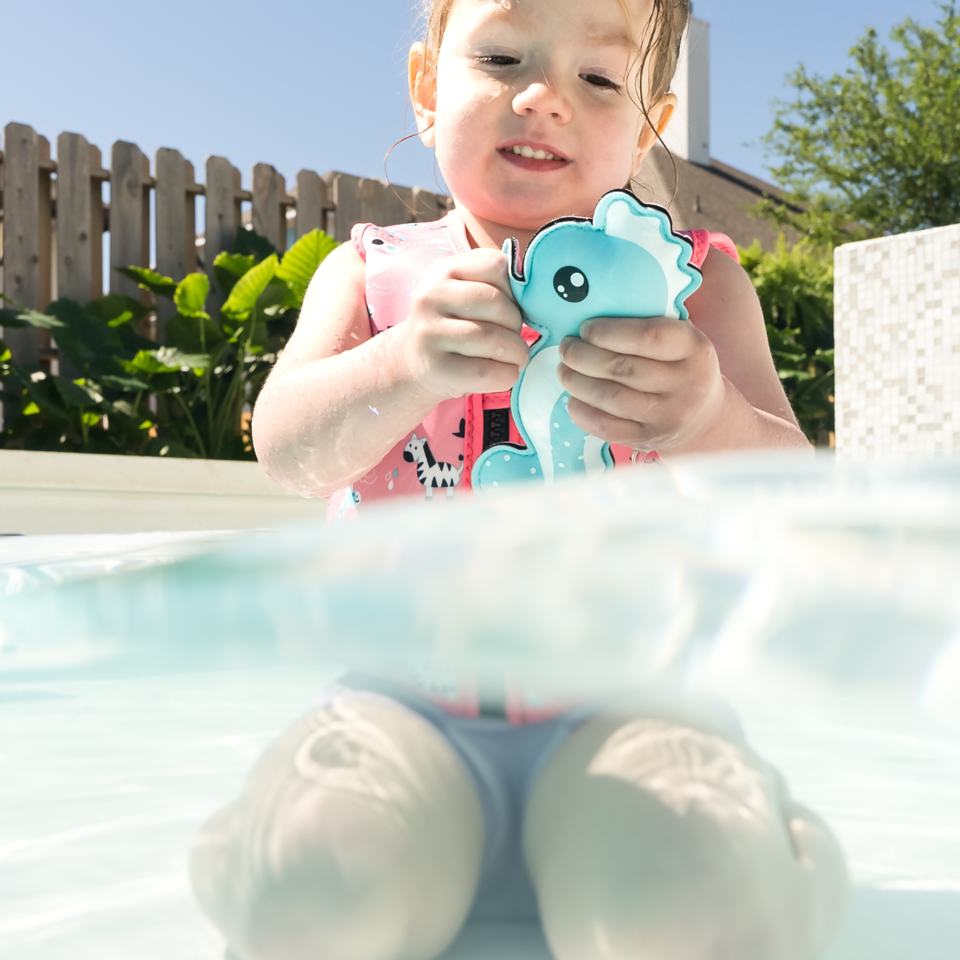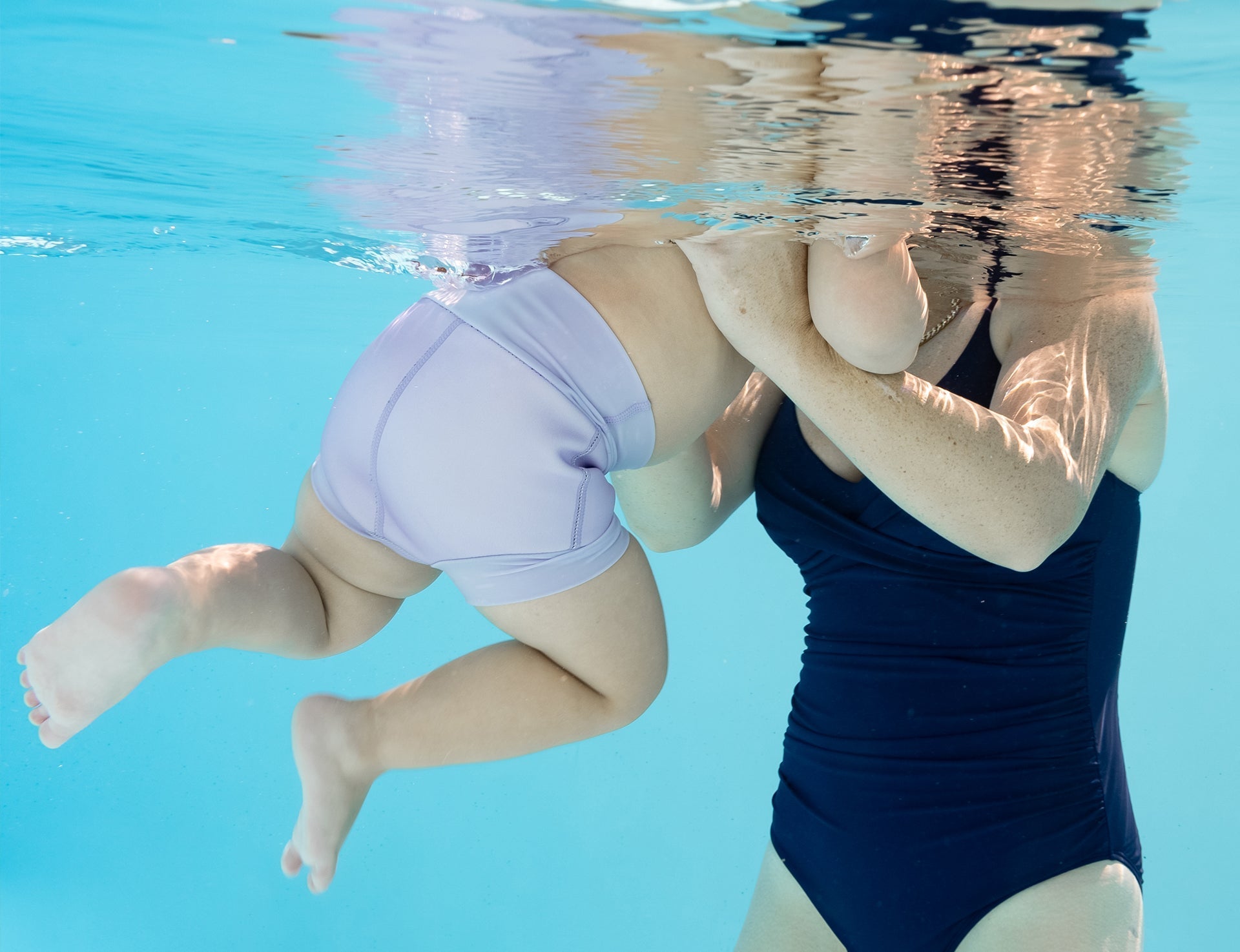Reviewed 21/03/2025
5 Tips for Protecting Your Child from Nappy Rash When Swimming
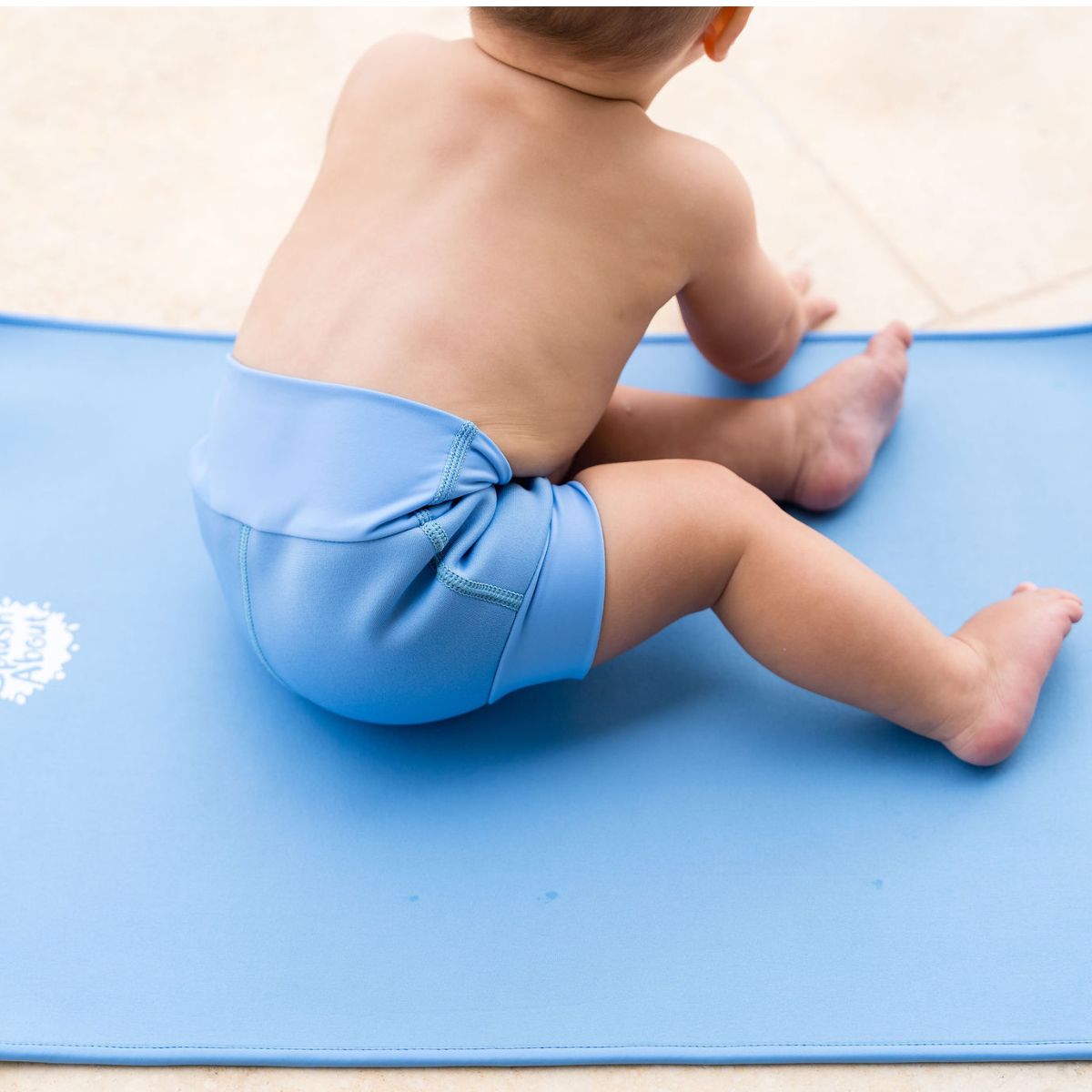
1. Remove your child’s swim nappy as soon as they leave the water
Disposable and reusable swim nappies are not designed to be absorbent, so they don’t draw liquid away from your baby’s bottom as regular disposable nappies do. Removing the swim nappy as soon as your child leaves the pool will ensure their bottom isn’t in contact with a damp nappy for a prolonged period.
Swim nappies do not absorb urine and faeces so, by drying your baby's bottom and swapping to a regular nappy quickly, you will ensure there are no poolside accidents, and help prevent the risk of nappy rash.
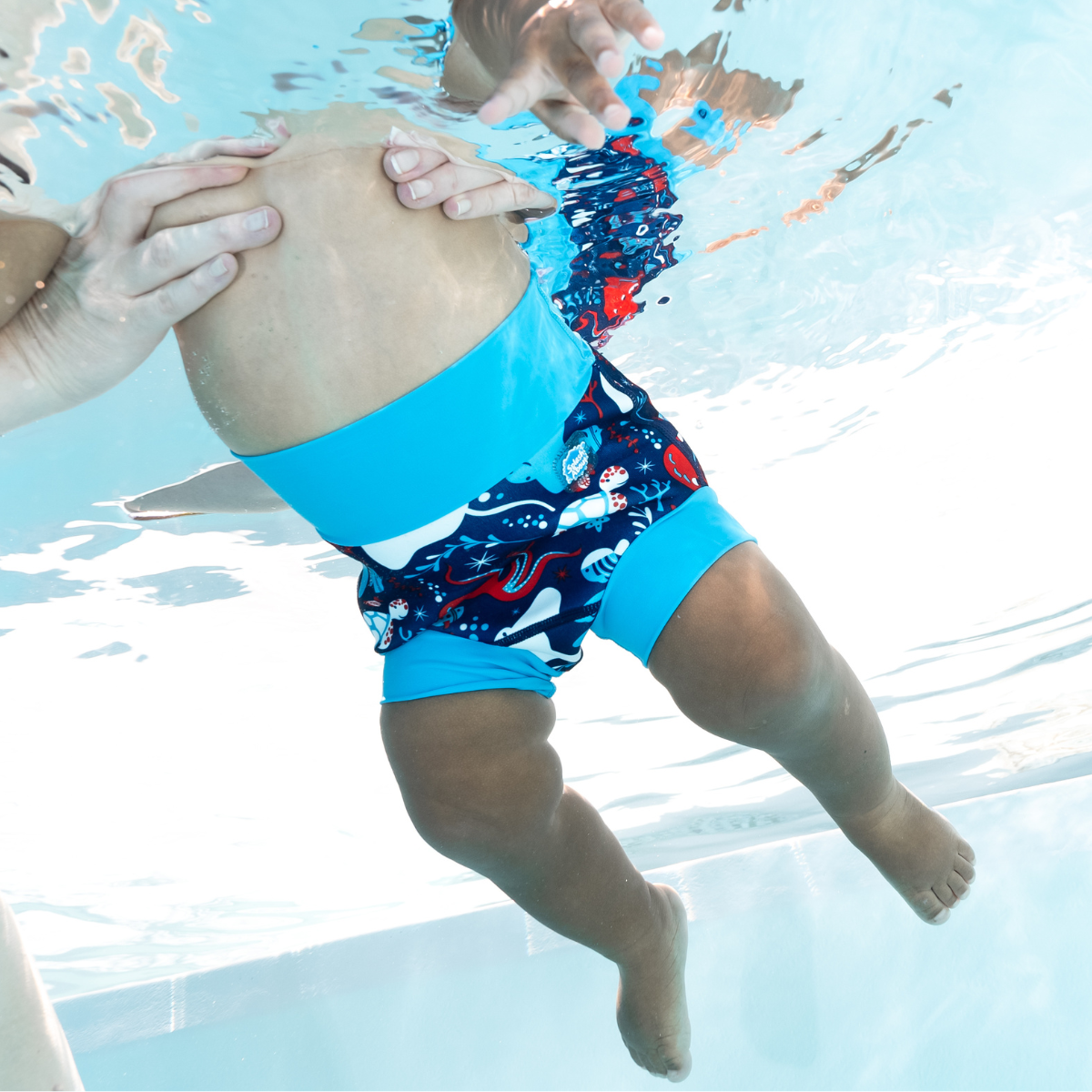
2. Apply a barrier cream before entering the water
If your child is prone to nappy rash,
help protect their skin by applying a layer of barrier cream before entering the pool. Speak to your GP or pharmacist about your best option for nappy rash creams and apply a layer before putting on your baby’s swim nappy.
If your child suffers from sensitive skin and is prone to eczema or other rashes then the Warm In One range from Splash About is an excellent choice for swimwear. These specialist swimsuits can be worn over barrier creams to help protect babies with sensitive skin.

1. Remove your child’s swim nappy as soon as they leave the water
Disposable and reusable swim nappies are not designed to be absorbent, so they don’t draw liquid away from your baby’s bottom as regular disposable nappies do. Removing the swim nappy as soon as your child leaves the pool will ensure their bottom isn’t in contact with a damp nappy for a prolonged period.
Swim nappies do not absorb urine and faeces so, by drying your baby's bottom and swapping to a regular nappy quickly, you will ensure there are no poolside accidents, and help prevent the risk of nappy rash.

2. Apply a barrier cream before entering the water
If your child is prone to nappy rash,
help protect their skin by applying a layer of barrier cream before entering the pool. Speak to your GP or pharmacist about your best option for nappy rash creams and apply a layer before putting on your baby’s swim nappy.
If your child suffers from sensitive skin and is prone to eczema or other rashes then the Warm In One range from Splash About is an excellent choice for swimwear. These specialist swimsuits can be worn over barrier creams to help protect babies with sensitive skin.
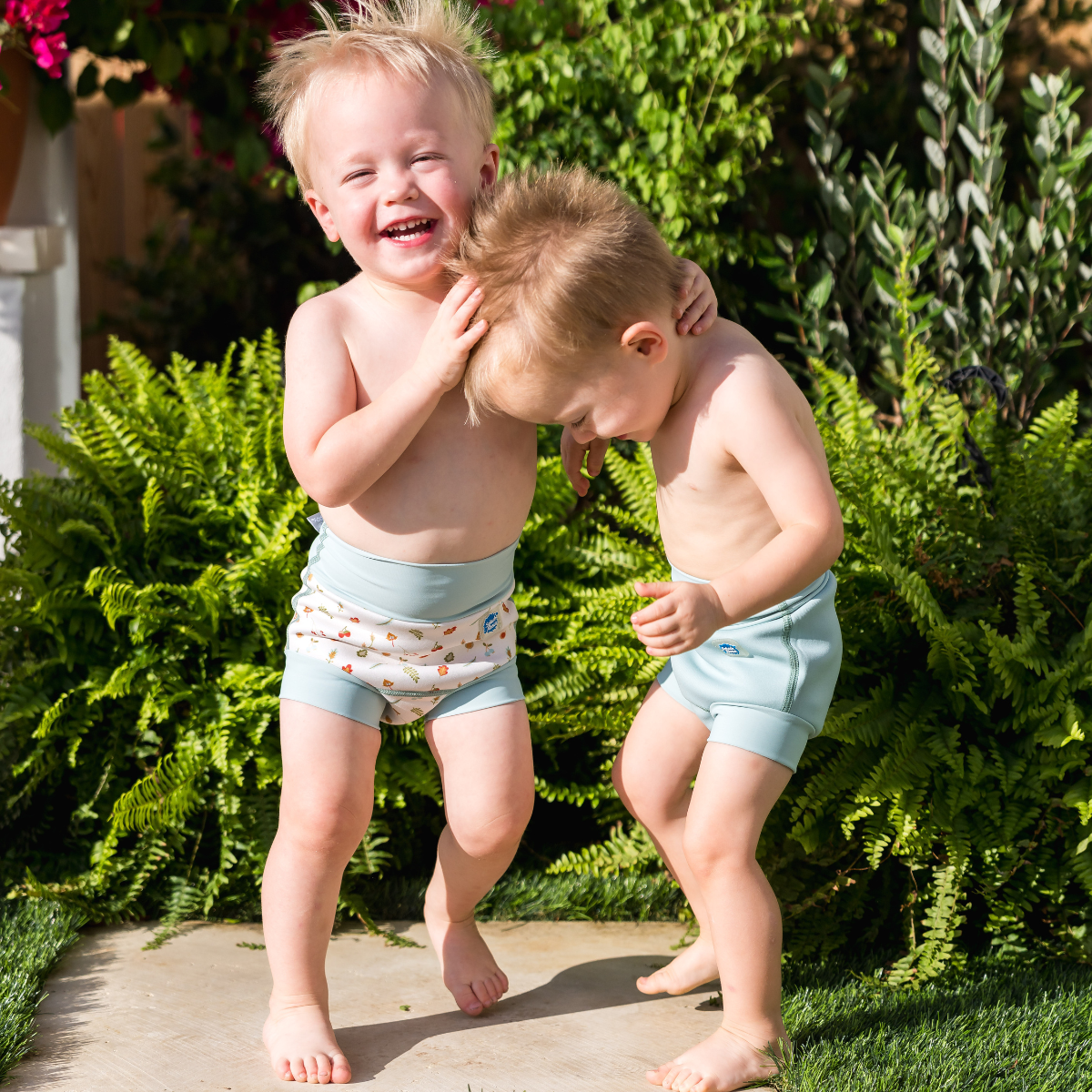
4. Avoid swimming if their nappy rash is really bad
If your baby already has a sore bottom from nappy rash then it’s best to avoid swimming in chlorinated pools as the chlorine could irritate the nappy rash, making the area more sore. If your little one has a fungal nappy rash (also known as candida or thrush) this can also become irritated by chlorine so it’s best to give swimming a miss until your baby’s bottom has healed. If you’re in doubt, then speak to your GP.
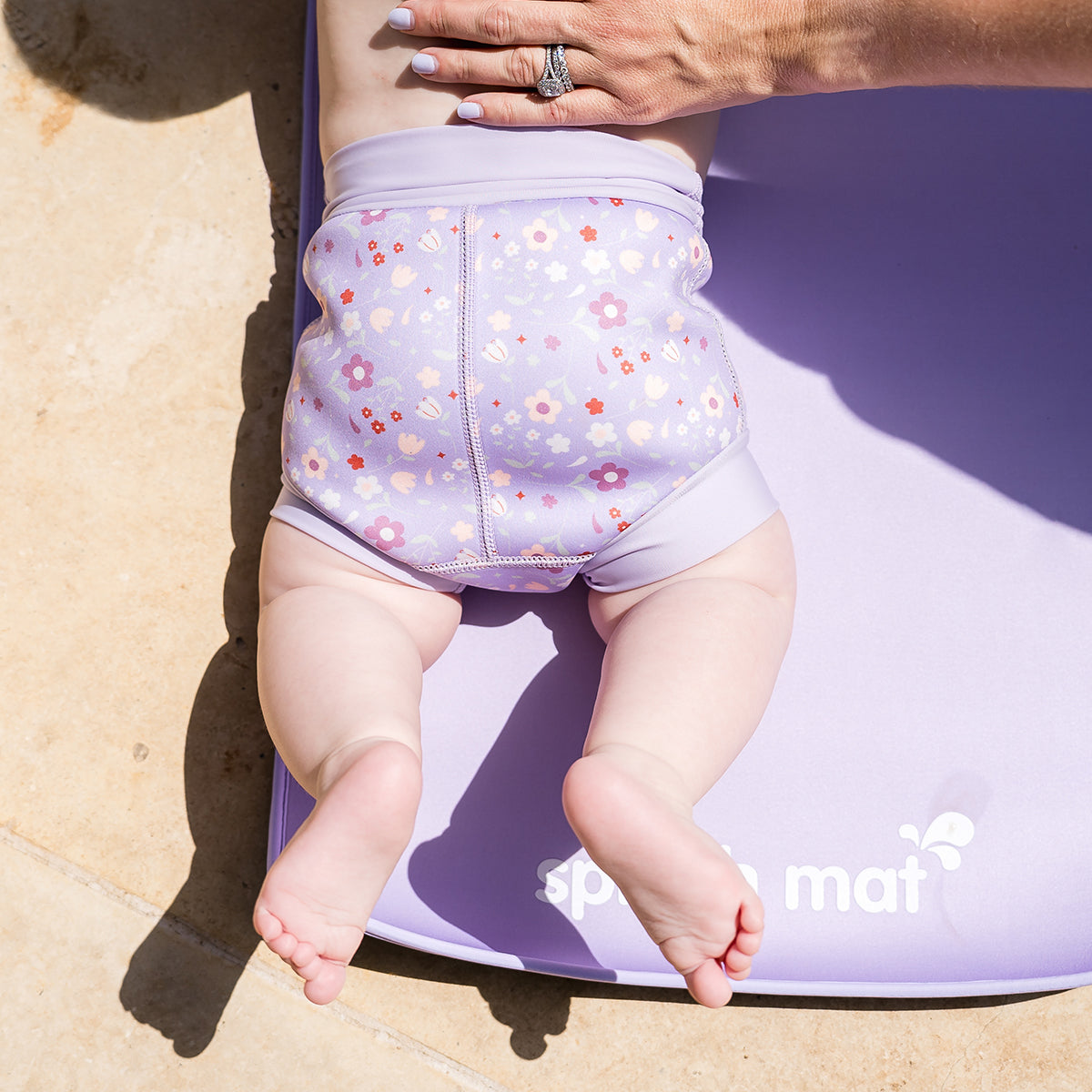
5. Ensure their swim nappy fits correctly
A swim nappy that is too tight is likely to rub your baby’s delicate skin which, as well as being uncomfortable, could cause chafing and exacerbate nappy rash. Reusable swim nappies tend to be a gentler option for babies’ skin than disposable swim nappies as they are made from soft, stretchy fabric. Reusable swim nappies, such as the Happy Nappy™ come in a wide range of sizes which means you can find the correct size for your little one to ensure a comfortable fit. Simply click on the ‘Size Guide’ button on any of the Happy Nappy product pages to find the best fit for your child.

4. Avoid swimming if their nappy rash is really bad
If your baby already has a sore bottom from nappy rash then it’s best to avoid swimming in chlorinated pools as the chlorine could irritate the nappy rash, making the area more sore. If your little one has a fungal nappy rash (also known as candida or thrush) this can also become irritated by chlorine so it’s best to give swimming a miss until your baby’s bottom has healed. If you’re in doubt, then speak to your GP.

5. Ensure their swim nappy fits correctly
A swim nappy that is too tight is likely to rub your baby’s delicate skin which, as well as being uncomfortable, could cause chafing and exacerbate nappy rash. Reusable swim nappies tend to be a gentler option for babies’ skin than disposable swim nappies as they are made from soft, stretchy fabric. Reusable swim nappies, such as the Happy Nappy™ come in a wide range of sizes which means you can find the correct size for your little one to ensure a comfortable fit. Simply click on the ‘Size Guide’ button on any of the Happy Nappy product pages to find the best fit for your child.
